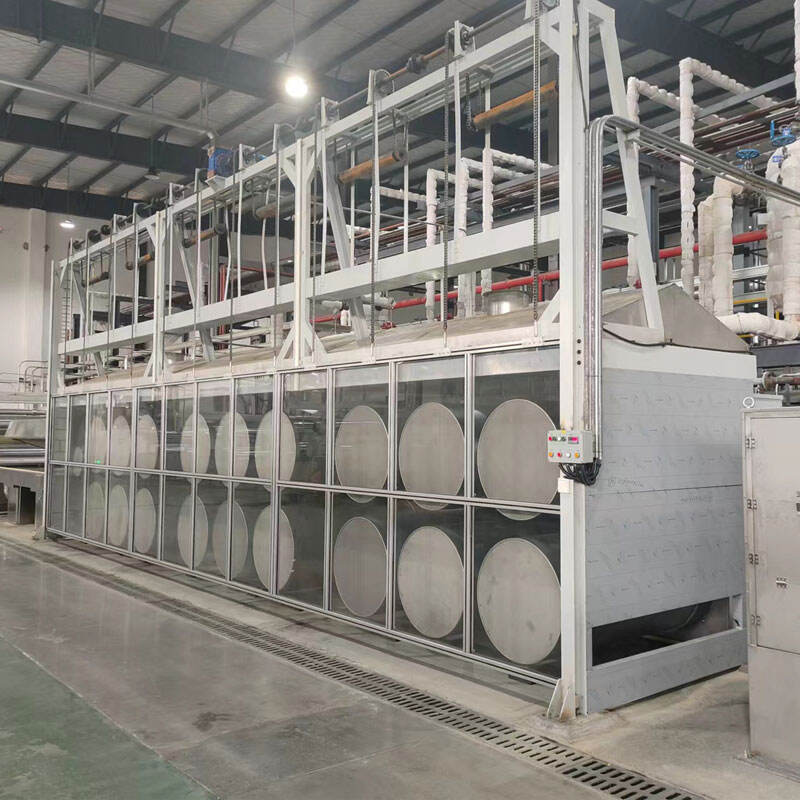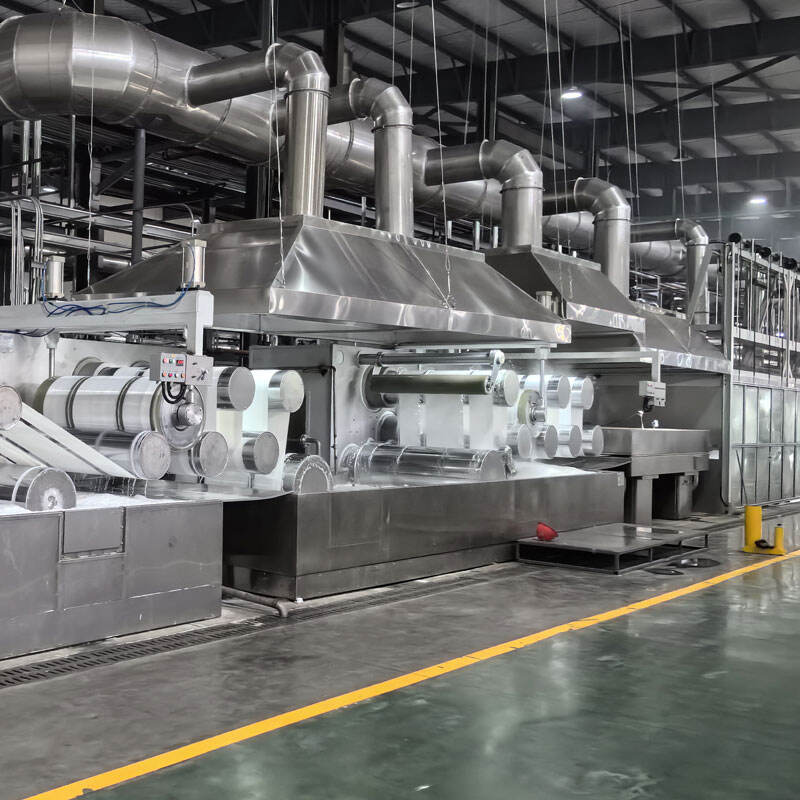In PSF manufacturing, transformations in technology continue to improve the efficiency of psf production lines—intelligent manufacturing systems are taking the place of traditional psf production systems that are labor intensive, inefficient, and unsustainable. Technological Innovations improve poor quality, high energy consumption, lack of efficiency, and flexibility to environmentally sustainable systems. Shenzhen Softgem Technology Co Ltd integrates innovative technology that helps PSF manufacturers to remain competitive in a rapidly evolving marketplace. Below, we review the core innovations that transform psf production line technology today.
With Internet of Things (IoT) technology integrated into the PSF production line, now real-time end-to-end manufacturing process monitoring is possible. Traditional PSF production lines depend on slow, hand-on monitoring that often overlooks even slight deviations in production line parameters. In comparison, IoT technology-enabled production lines have hundreds of sensors that accompany every stage of production from the feeding of the PET chips to the winding of the fibres. These sensors collect important metrics data such as temperature, extrusion rate, the tension of the fibres, and air pressure of the cooling system. The collected information is sent wirelessly to a centralized control system to which the line operators have access on their desktop computers and mobile phones to track the line. For instance, a PSF production line with IoT sensors would send an alert of a 2℃ temperature spike in the line’s melting chamber and recommend control adjustments to prevent the degradation of the PET. Softgem based in Shenzhen uses IoT technology on production line for PSF to store history and data, thus customer trends and problems can be replicated analyzed. Automation technology implementation stabilizes production processes and improves consistency in finished products and reduces human error to about 80%.

The advancement of AI technologies allows the PSF production line to advance from “monitored” to “self-optimizing” and implement adaptive control for changing production environments. Previously, PSF production lines required constant manual tuning of parameters to account for changing raw materials and estimates. AI-implemented PSF production lines remove this manual stage and use machine learning to examine current and past production data. An example of this is when PSF production lines switch from melting and extruding virgin PET chips to recycled PET chips. The AI system will automatically adjust the melting temperature and extrusion speeds to maintain the quality of the fibres depending on impurity levels. The AI system also focuses on energy optimization. It will reduce the speed of the PSF line's non-essential components during off-peak hours to meet a preset power consumption goal. AI also enables predictive maintenance scheduling on the PSF production line. Through analyzing data on wear of components, spinning nozzles, and bearing friction, the system predicts probable failures and gaps and schedules maintenance weeks in advance. Shenzhen Softgem’s AI-Enhanced PSF production line reduces energy downtime by 15-20% and unplanned downtime by 35-40% demonstrating predictive maintenance capabilities to modern manufacturing.
Developing new technologies for the production line of PSF with the focus on sustainability is becoming common since there are global eco-goals to meet and customers are pushing for green manufacturing. New "value added" eco-innovations for the production line of PSF include the adoption of new heat recovery technology. In the manufacturing of PSF a temperature of 260 degrees Celsius is required for melting the PET and the classical production line wastes 60 to 70% of the heat and energy. The modern production line captures the waste heat from the melting and heat-setting stages and uses it to preheat raw materials and for heating the production workshop, thus lowering the energy needed for melting by 25 to 30% overall. Another important eco-innovation is the increased expansion of the Shenzhen Softgem PSF production line in the processing of PSF recycled materials. The line has specialized impurity-removal modules that removes contaminants from recycled PET chips, producing high quality PSF that meets the standard. This allows the PSF production line to divert 50,000 to 100,000 tons of plastic waste from landfills. Eco-friendly lubricants and non-toxic additives are used in the PSF production line that also withstand performance. These innovations that focus on green technologies and the recovery of waste make the PSF production line a leader in PSF industry circular economy practices.

To keep up with the global demand for PSF, technological advancements for psf production lines focus on becoming high-speed and high-capacity. Upgraded modern systems have evolved from traditional lines which output 30-40 tons per day, to 80-120 tons per day. Important advancements are high performance extrusion heads that accommodate 50% more PET melt processing, multi-roller drawing machines that pull and draw the fibres at 800-1000 meters per minute, which is double the speed, and the automated winding units that spool fibres into bigger bobbins to minimize the winding units and changeover time. For instance, the drawing section of Shenzhen Softgem’s psf production line uses 12 rollers instead of 8, which allows for faster, more uniform stretching of fibres and reduces the incidence of fibre breakage and snapping. Upgrades of this nature are essential to accompany the high-capacity production lines to accommodate large-scale manufacturers. Providing PSF for large textile manufacturers seasonal collections is an example of bulg order fulfillment without the need to expand production space.
Especially for smaller, varied orders, flexible and modular design is an important new feature for the psf production line. In the past, the production line was fixed, and the production staff had to take apart the system for configuration changes (denier, length, or color) for the system to work shooting up to 4-6 hours. However, a production line with the most up-to-date technology will incorporate modular design principles, where essential sections (feeding, melting, drawing, and cutting) are self-sufficient and can rapidly be changed or adjusted. For example, operators at Shenzhen Softgem can change the cutting module and software settings to switch from making 1.5D fine fibre to 10D coarse fibre. This task is less than an hour. The production line also supports "on-the-fly" customization, which is system tweaking to make minor changes like incorporating a flame-retardant or antibacterial agent. This kind of flexibility permits quick changes in production, for preparing medicated masks, where antibacterially PSF is a must, and then switching to colored PSF a month later for home textiles.
The modular PSF production line cuts down on maintenance time: if one module fails, it can be taken out and worked on while the other parts of the line stay operational, reducing downtime. This innovation allows the PSF production line to adapt to the ever-changing demands of the industry, a necessity for remaining competitive in the long run.
 Hot News
Hot News2024-07-25
2024-07-25
2024-07-25